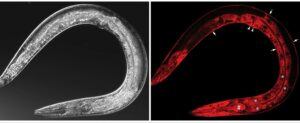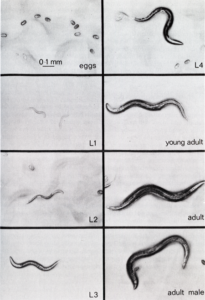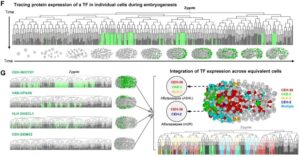Introduction
Research has already shown a proper establishment of cell polarity is vital for several events during development stages and morphogenesis. This paper from Sukriti Kapoor & Sachin Kotak aimed at understanding the mechanisms involved in the cortical anisotropy allowing the actomyosin network to promote cell polarit. This study in C. elegans embryo shows the role of Aurora A kinase (AIR-1) as regulator of PAR-2, to create a singularity in the polarity establishment axis. ECT-2 (Rho GEF), downstream, is also involved in the regulation of contractility and localization of PAR-2. AIR-1 acts as the polarizing signal at the centrosome, initiating the polarity establishment due to its impact on actomyosin-based cortical contractility.

Ultra fast temperature shift device for in vitro experiments under microscopy
Abstract
Proper establishment of cell polarity is essential for development. In the one-cell C. elegans embryo, a centrosome-localised signal provides spatial information for polarity establishment. It is hypothesised that this signal causes local inhibition of the cortical actomyosin network, and breaks symmetry to direct partitioning of the PAR proteins. However, the molecular nature of the centrosomal signal that triggers cortical anisotropy in the actomyosin network to promote polarity establishment remains elusive. Here, we discover that depletion of Aurora A kinase (AIR-1 in C. elegans) causes pronounced cortical contractions on the embryo surface, and this creates more than one PAR-2 polarity axis. This function of AIR-1 appears to be independent of its role in microtubule nucleation. Importantly, upon AIR-1 depletion, centrosome positioning becomes dispensable in dictating the PAR-2 axis. Moreover, we uncovered that a Rho GEF, ECT-2, acts downstream of AIR-1 in regulating contractility and PAR-2 localisation, and, notably, AIR-1 depletion influences ECT-2 cortical localisation. Overall, this study provides a novel insight into how an evolutionarily conserved centrosome Aurora A kinase inhibits promiscuous PAR-2 domain formation to ensure singularity in the polarity establishment axis.



